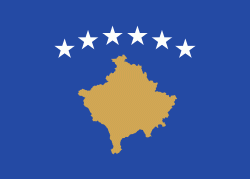Zubin Potok (Zubin Potok)
Zubin Potok (Зубин Поток, Zubin Potoku); is a town and municipality located in the Mitrovica District in Kosovo. As of 2015, it has an estimated population of 15,200 inhabitants. It covers an area of 335 km2, and consists of the main town and 63 villages.
Zubin Potok is a part of North Kosovo, a region with an ethnic Serb majority that functions largely autonomously from the remainder of ethnic Albanian-majority Kosovo. After the 2013 Brussels Agreement, the municipality became part of the Community of Serb Municipalities.
Aside from the town of Zubin Potok, these villages comprise the municipality of Zubin Potok:
* Babiće / Babiq
* Banja / Banjë
* Brnjak / Bërnjak
* Bube / Bubë
* Čabra / Çabër
* Čečevo / Çeçevë
* Češanoviće / Çeshanovë
Zubin Potok is a part of North Kosovo, a region with an ethnic Serb majority that functions largely autonomously from the remainder of ethnic Albanian-majority Kosovo. After the 2013 Brussels Agreement, the municipality became part of the Community of Serb Municipalities.
Aside from the town of Zubin Potok, these villages comprise the municipality of Zubin Potok:
* Babiće / Babiq
* Banja / Banjë
* Brnjak / Bërnjak
* Bube / Bubë
* Čabra / Çabër
* Čečevo / Çeçevë
* Češanoviće / Çeshanovë
Map - Zubin Potok (Zubin Potok)
Map
Country - Kosovo
 |
 |
In classical antiquity, the central tribe which emerged in the territory of Kosovo were the Dardani, who formed an independent polity known as the Kingdom of Dardania in the 4th century BC. It was annexed by the Roman Empire by the 1st century BC, and for the next millennium, the territory remained part of the Byzantine Empire, whose rule was eroded by Slavic invasions beginning in the 6th–7th century AD. In the centuries thereafter, control of the area alternated between the Byzantines and the First Bulgarian Empire. By the 13th century, Kosovo became the core of the Serbian medieval state, and has also been the seat of the Serbian Orthodox Church from the 14th century, when its status was upgraded to a patriarchate. Ottoman expansion in the Balkans in the late 14th and 15th century led to the decline and fall of the Serbian Empire; the Battle of Kosovo of 1389 is considered to be one of the defining moments in Serbian medieval history. The Ottomans fully conquered the region after the Second Battle of Kosovo. The Ottoman Empire ruled the area for almost five centuries until 1912.
Currency / Language
| ISO | Language |
|---|---|
| SQ | Albanian language |
| SR | Serbian language |















